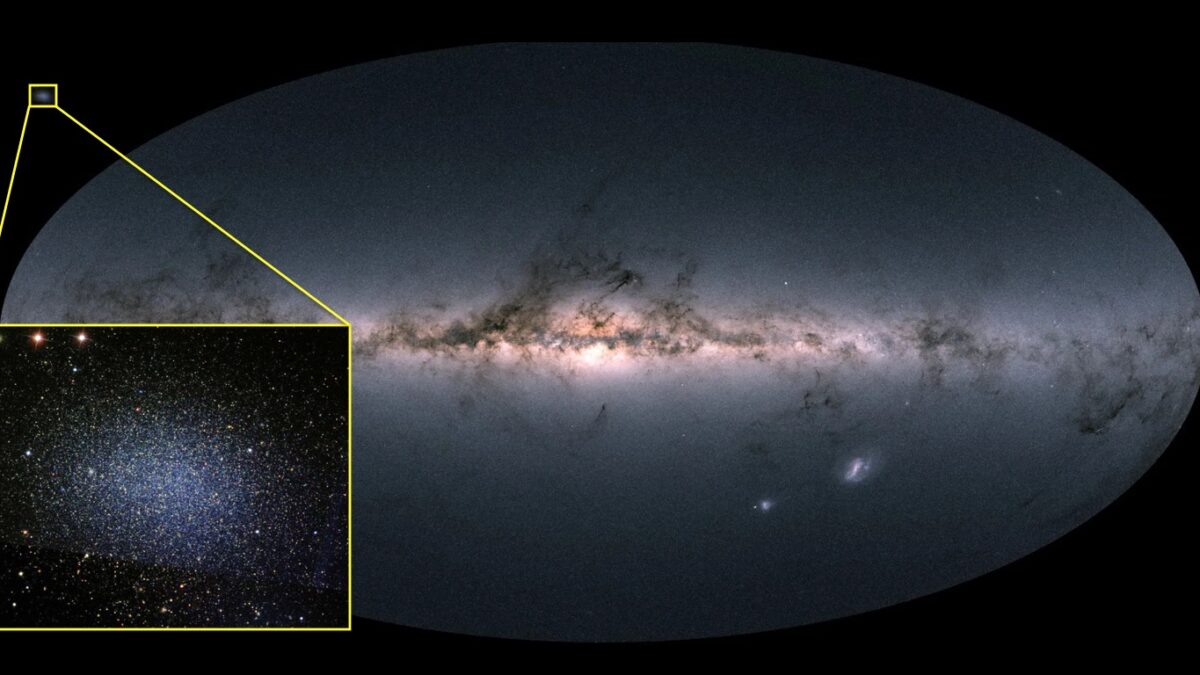The reason we call dark matter dark isn’t because it’s some shadowy material. It’s because dark matter doesn’t interact with light. The difference is subtle, but important. Regular matter can be dark because it absorbs light. It’s why, for example, we can see the shadow of molecular clouds against the scattered stars of the Milky Way. This is possible because light and matter have a way to connect. Light is an electromagnetic wave, and atoms contain electrically charged electrons and protons, so matter can emit, absorb and scatter light. Dark matter isn’t electrically charged. It has no way to connect with light, and so when light and dark matter meet up they simply pass through each other.
Continue reading “Dark Matter Could a Have Slight Interaction With Regular Matter”Mapping the Stars in a Dwarf Galaxy to Reveal its Dark Matter
Dark matter is curious stuff! As the name suggests, it’s dark making it notoriously difficult to study. Although it’s is invisible, it influences stars in a galaxy through gravity. Now, a team of astronomers have used the Hubble Space Telescope to chart the movements of stars within the Draco dwarf galaxy to detect the subtle gravitational pull of its surrounding dark matter halo. This 3D map required studying nearly two decades of archival data from the Draco galaxy. They found that dark matter piles up more in the centre, as predicted by cosmological models.
Continue reading “Mapping the Stars in a Dwarf Galaxy to Reveal its Dark Matter”The Milky Way’s Last Merger Event Was More Recent Than Thought
The Milky Way is only as massive as it is because of collisions and mergers with other galaxies. This is a messy process, and we see the same thing happening with other galaxies throughout the Universe. Currently, we see the Milky Way nibbling at its two satellite galaxies, the Large and Small Magellanic Clouds. Their fate is likely sealed, and they’ll be absorbed into our galaxy.
Researchers thought the last major merger occurred in the Milky Way’s distant past, between 8 and 11 billion years ago. But new research amplifies the idea that it was much more recent: less than 3 billion years ago.
Continue reading “The Milky Way’s Last Merger Event Was More Recent Than Thought”The Milky Way’s Smallest, Faintest Satellite Galaxy Found
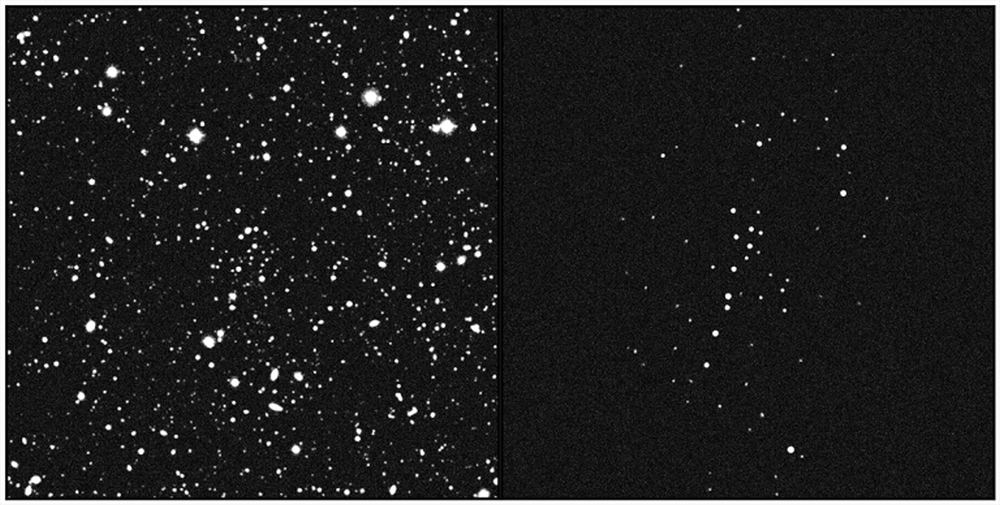
The Milky Way has many satellite galaxies, most notably the Large and Small Magellanic Clouds. They’re both visible to the naked eye from the southern hemisphere. Now astronomers have discovered another satellite that’s the smallest and dimmest one ever detected. It may also be one of the most dark matter-dominated galaxies ever found.
Continue reading “The Milky Way’s Smallest, Faintest Satellite Galaxy Found”Dwarf Galaxies Could be the Key to Explaining Dark Matter
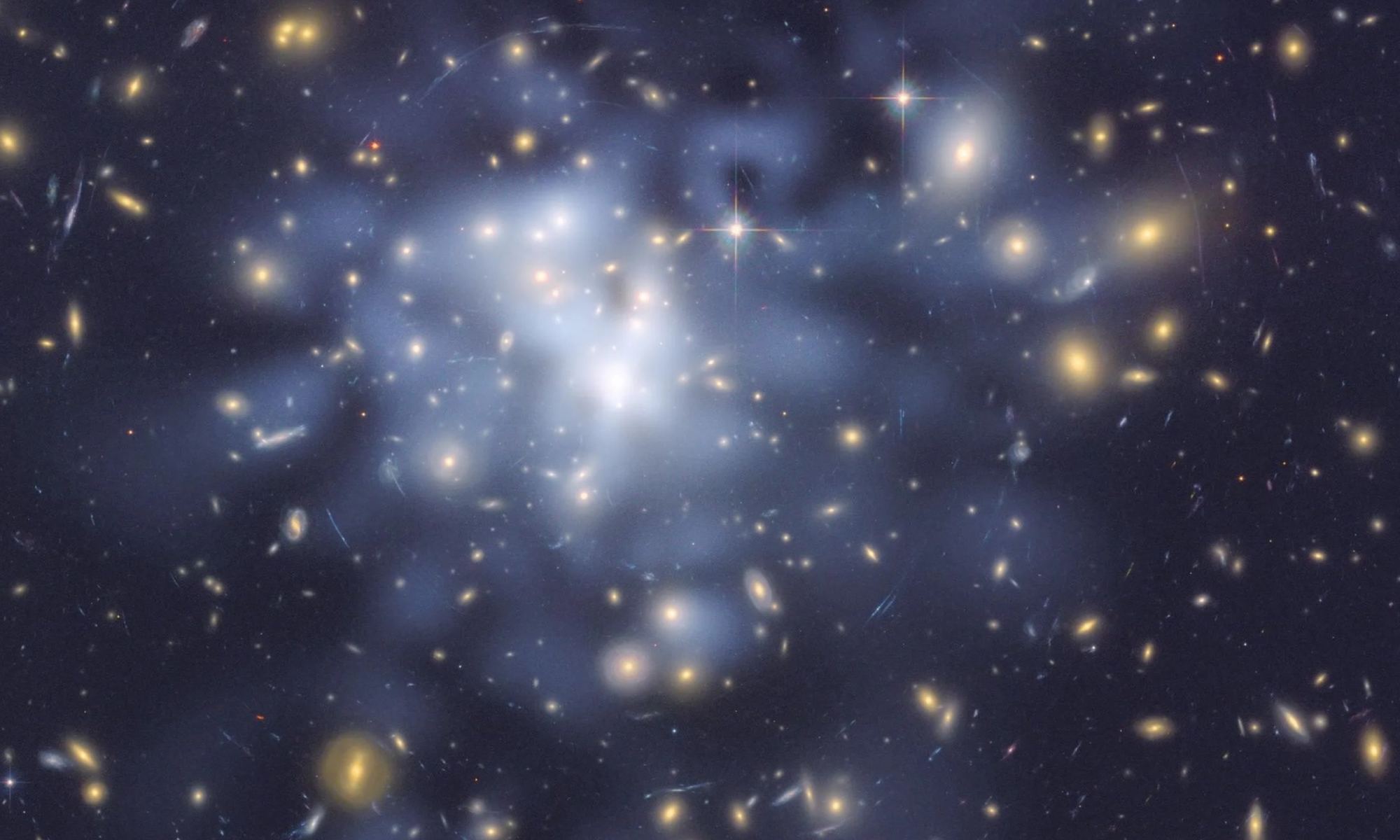
If you have a view of the southern celestial sky, on a clear night you might see two clear smudges of light set off a bit from the great arch of the Milky Way. They are the Large and Small Magellanic Clouds, and they are the most visible of the dwarf galaxies. Dwarf galaxies are small galaxies that typically cluster around larger ones. The Milky Way, for example, has nearly two dozen dwarf galaxies. Because of their small size, they can be more significantly affected by dark matter. Their formation may even have been triggered by the distribution of dark matter. So they can be an excellent way to study this mysterious unseen material.
Continue reading “Dwarf Galaxies Could be the Key to Explaining Dark Matter”Dwarf Galaxies Banished the Darkness and Lit Up the Early Universe
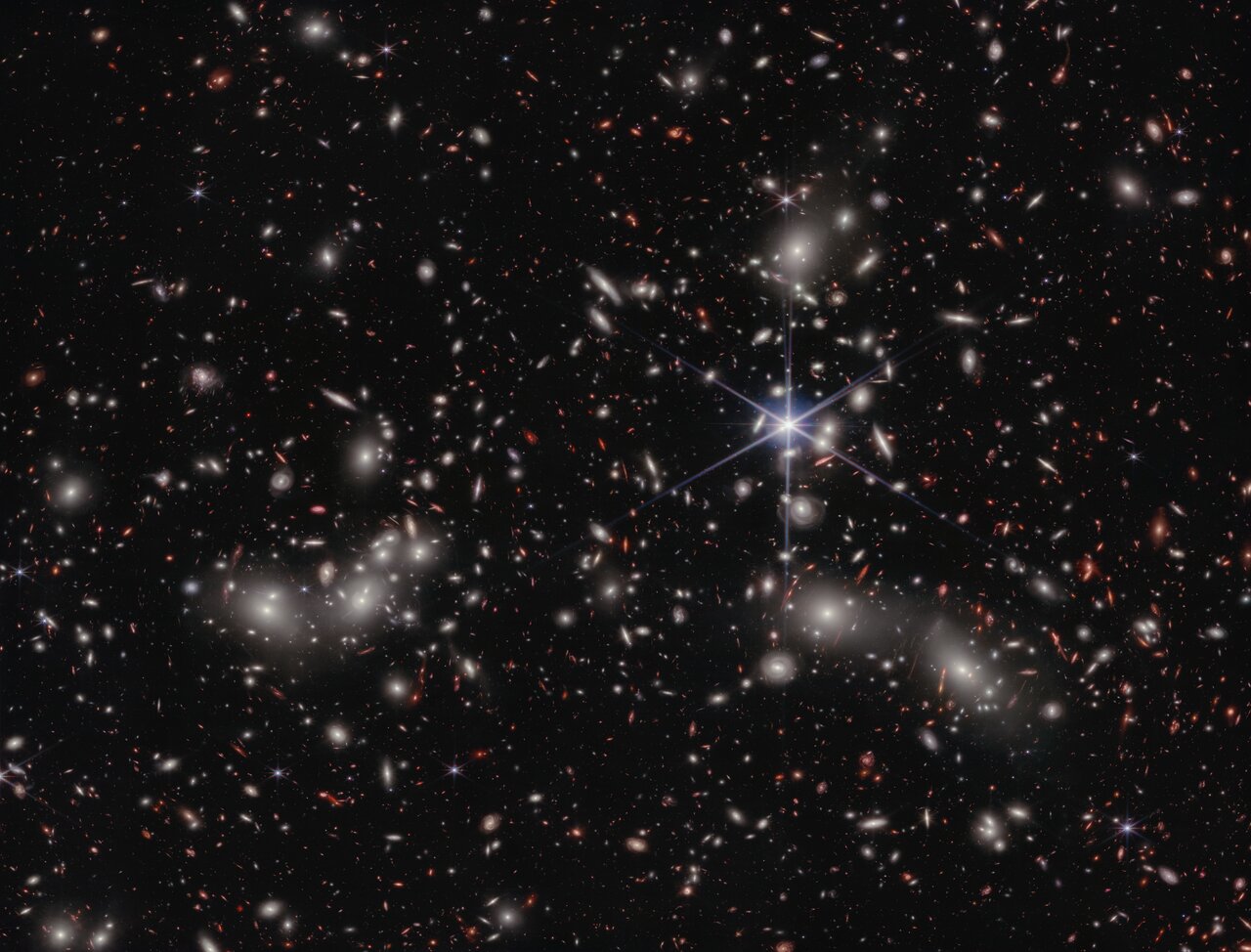
During the Universe’s Dark Ages, dense primordial gas absorbed and scattered light, prohibiting it from travelling. Only when the first stars and galaxies began to shine in energetic UV light did the Epoch of Reionization begin. The powerful UV light shone through the Universe and punched holes in the gas, allowing light to travel freely.
New observations with the James Webb Space Telescope reveal how it happened. The telescope shows that faint dwarf galaxies brought an end to the darkness.
Continue reading “Dwarf Galaxies Banished the Darkness and Lit Up the Early Universe”Mystery Solved. How We Get Ultra-Compact Dwarf Galaxies
I have been fascinated by galaxies for most of my adult life. I find it amazing that, just as we can ascertain the lifecycle of a tree by closely studying the trees in a forest, it is possible to study a sample of galaxies and understand galactic evolution. A team of astronomers using the Gemini North Telescope have recently solved a long standing galactic mystery, namely how we get ultra-compact dwarf galaxies (UCDs to use their catchy acronym).
Continue reading “Mystery Solved. How We Get Ultra-Compact Dwarf Galaxies”The Perfect Tidal Tail Connects These two Galaxies Seen by Hubble
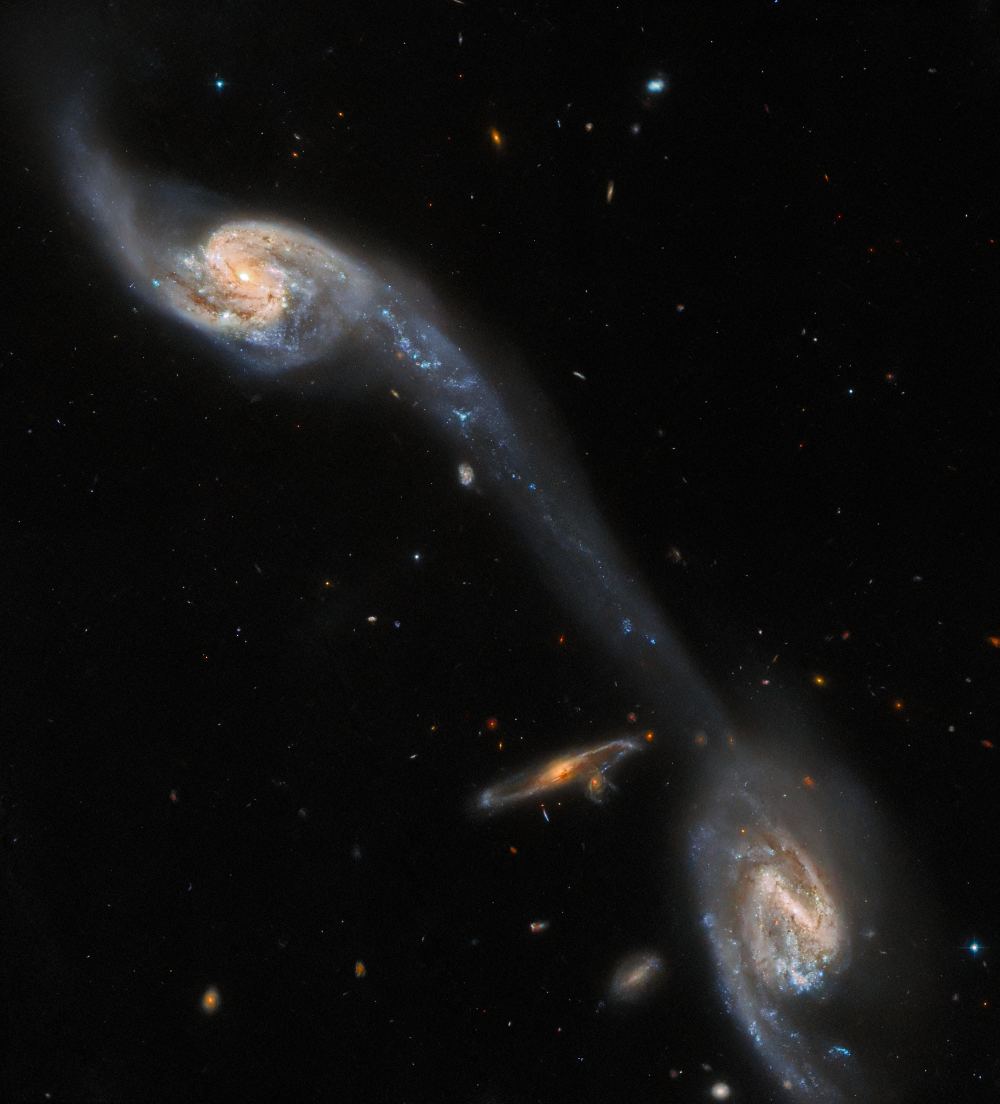
Sometimes it’s tempting to imagine a supernatural hand behind the arrangement of celestial bodies. But the Universe is big, huge even, and nature’s flow presents many fascinations.
So it is with the galactic triplet Arp 248, an arrangement of interacting galaxies that’s both visually and scientifically fascinating.
Continue reading “The Perfect Tidal Tail Connects These two Galaxies Seen by Hubble”Dwarf Galaxies Found Without Influence From Dark Matter
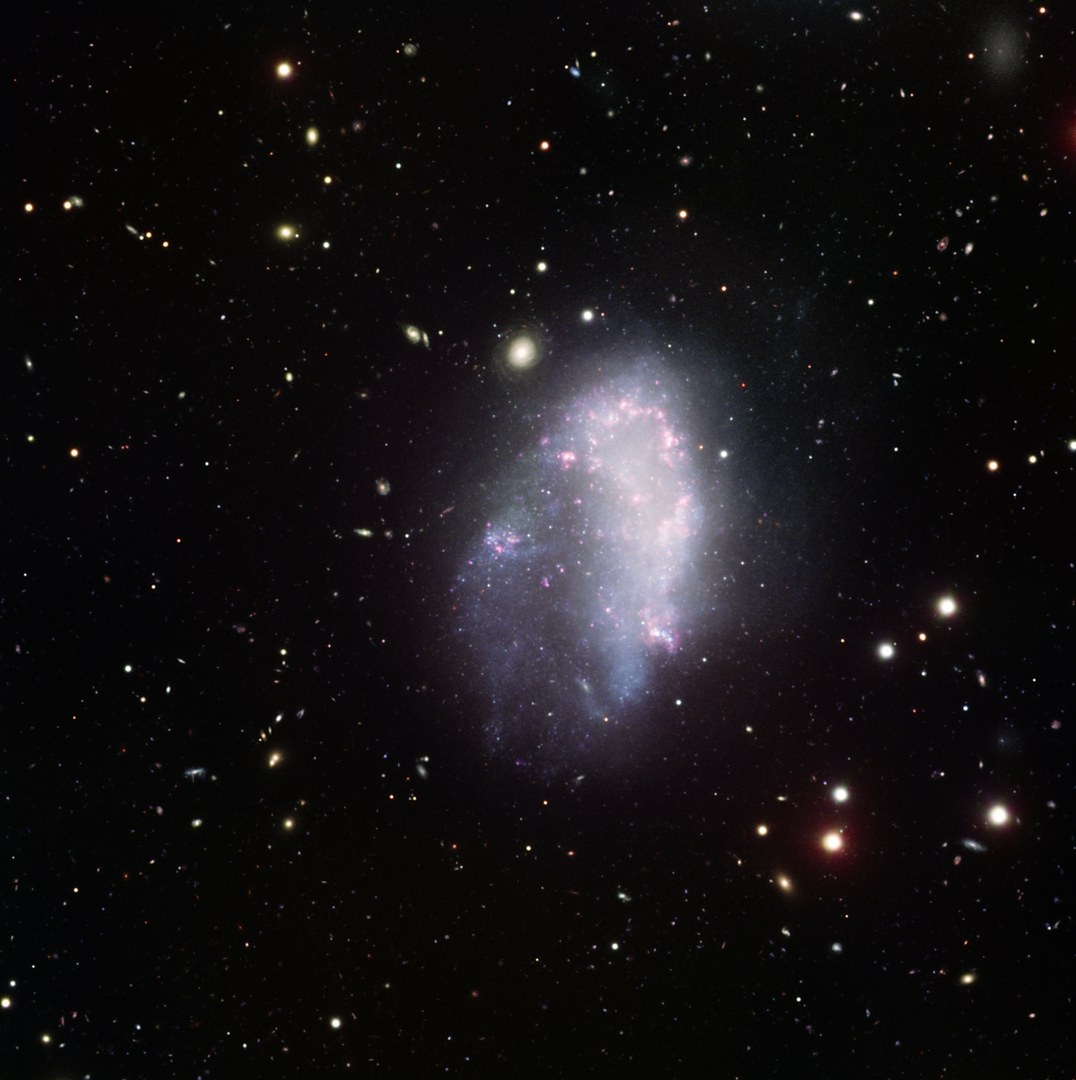
Ask astronomers about dark matter and one of the things they talk about is that this invisible, mysterious “stuff” permeates the universe. In particular, it exists in halos surrounding most galaxies. The mass of the halo exerts a strong gravitational influence on the galaxy itself, as well as on others in the neighborhood. That’s pretty much the standard view of dark matter and its influence on galaxies. However, there are problems with the idea of those halos. Apparently, some oddly shaped dwarf galaxies exist that look like they have no halos. How could this be? Do they represent an observationally induced challenge to the prevailing ideas about dark matter halos?
Continue reading “Dwarf Galaxies Found Without Influence From Dark Matter”A Nearby Dwarf Galaxy has a Surprisingly Massive Black Hole in its Heart
Since the 1970s, scientists have known that within the cores of most massive galaxies in the Universe, there beats the heart of a Supermassive Black Hole (SMBH). The presence of these giant black holes causes these galaxies to be particularly energetic, to the point where their central regions outshine all the stars in their disks combined – aka. Active Galactic Nuclei (AGN). The Milky Way galaxy has its own SMBH, known as Sagittarius A*, which has a mass of over 4 million Suns.
For decades, scientists have studied these objects in the hopes of learning more about their role in galactic formation and evolution. However, current research has shown that SMBHs may not be restricted to massive galaxies. In fact, a team of astronomers from the University of Texas at Austin’s McDonald Observatory recently discovered a massive black hole at the heart of a dwarf galaxy that orbits the Milky Way (Leo I). This finding could redefine our understanding of how black holes and galaxies evolve together.
Continue reading “A Nearby Dwarf Galaxy has a Surprisingly Massive Black Hole in its Heart”




